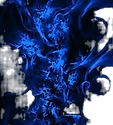The Power of Movement: How Dance Can Revitalize Your Busy Professional Life
- Brionna Jarda
- Feb 13
- 1 min read
Updated: Jul 6

Majorette Dancing Style
Majorette dancing is a vibrant and energetic style of dance that combines elements of traditional marching band performances with choreography and athleticism. It is often characterized by its rhythmic movements, precision, and the use of props such as batons or flags. Here are some key aspects of majorette dancing:
History
Majorette dancing originated in the United States, primarily associated with marching bands and parades. It has roots in military drill and has evolved to include a wide range of dance styles and techniques.
Characteristics
Choreography: Majorette routines often include intricate dance sequences that are synchronized with music.
Props: Dancers typically use batons, flags, or pom-poms, which they twirl and manipulate as part of their performance.
Costumes: Majorettes often wear colorful and eye-catching uniforms that enhance their performances and add to the visual spectacle.
Precision: The style emphasizes sharp, precise movements and formations, often mirroring the structure of a marching band.
Training and Skills
Majorette dancers undergo rigorous training to develop their skills. Key areas of focus include:
Technique: Mastery of dance techniques such as turns, leaps, and footwork.
Strength and Flexibility: Physical conditioning to enhance performance capability.
Musicality: Understanding rhythm and timing to synchronize movements with music.
Competitions
Majorette teams often participate in competitions where they showcase their routines. Judging criteria typically include:
Choreography and creativity
Technical execution
Overall performance and showmanship
Conclusion
Majorette dancing is a dynamic and expressive art form that combines dance, music, and performance skills. It fosters teamwork, discipline, and creativity, making it a popular choice for many young dancers.






Comments